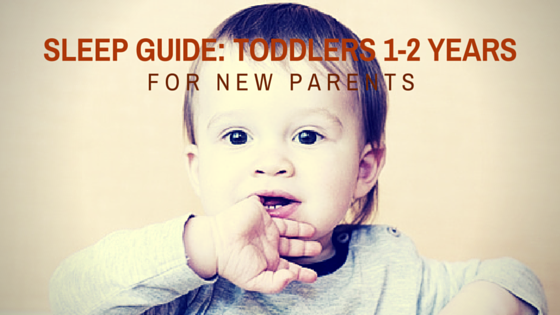
There is a big difference between getting enough sleep and getting quality sleep. Getting enough sleep means that your child was able to achieve the right amount of sleep required for their age. Quality sleep, on the other hand talks about whether your child feels comfortable the whole time that they are asleep.
For how long should toddlers 1-2 years old sleep?
Getting enough and quality sleep will help your child’s growth and development physically and mentally. As your toddler grows up, the sleeping time reduces and they are involved in more activities throughout the day and sometimes at night.
Toddlers of 1-2 years will sleep for 12-14 hours a day. Due to the activities that they are engaged in daily, they will show signs of drowsiness and will achieve sleep easier. If the child had more naps during the day, they tend to stay awake at night where they engage in different activities on their own. Here’s a simple sleep guide for toddlers 1-2 years of age.
Preparing Toddlers 1-2 Years to Sleep
In most cases, a child can get sleepy after feeding. So it is ideal to prepare them for a nap after they feed in the afternoon and at night. As a parent, you need to find a cue that shows when your child needs to sleep, e.g. rubbing the eyes, being irritable, or such.
Once your toddler is showing these signs of sleepiness, prepare them to sleep. Try some activities that don’t require moving a lot like looking into picture books and listening to constant sounds or music.
Settling Your Toddler to Sleep
If you have established a settling pattern that works for your child, continue with it. If you are planning to change the sleeping pattern, keep in mind that it may take long for your child to adapt to the new pattern so you need to be patient. Common ways of settling toddlers of 1-2 years include bath, cuddling, listening to songs. Ensure that you put your child into their cot while they are still awake so they will get used to the sleeping time and to their cot as well.
Patting the toddler slowly may help her fall asleep. You can do this by sitting on a chair beside their cot where they can see you close by. They will get used to this pattern and you can reduce the timing and frequency of patting them to sleep as time goes on. Make sure that they are comfortable in the cot – sheets are properly tucked into the sides and no other stuff inside the cot that might disrupt their sleeping like large toys.
As your child grows towards two years and they are used to the sleeping patterns, you can gradually adjust them so you will reduce the time that you have to soothe your child. Eventually, when they are ready to sleep, you can just soothe them a little and you can leave them to sleep. Toddlers 1-2 years of age learn fast but changes should be gradual.
Sometimes, while getting into sleeping mode, your child might cry when they notice that you are not in the room with them. Separation anxiety gets the better of children and they may wake up and cry at night. They may also be having light period of sleep and a slight noise wakes them up. Discomfort such as teething and ear ache may also wake the child. Rocking your child in bed And gentle reassurance will assist your child back to sleep. Sometimes, the child needs the assurance that there is someone nearby and they will fall back to sleep immediately.


